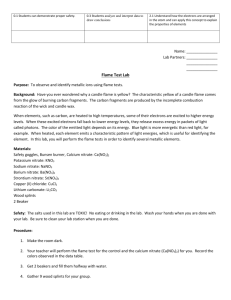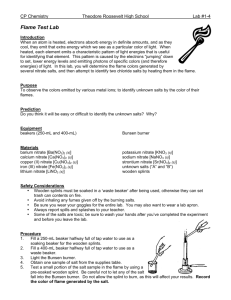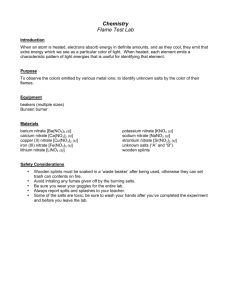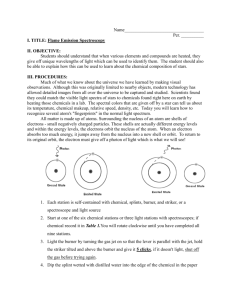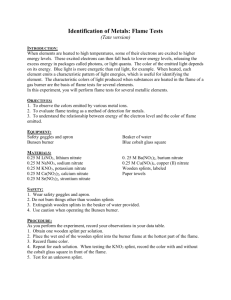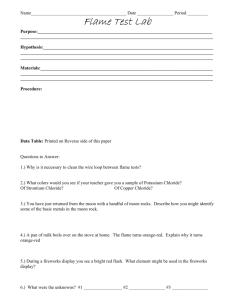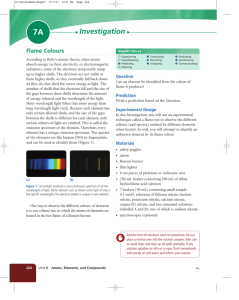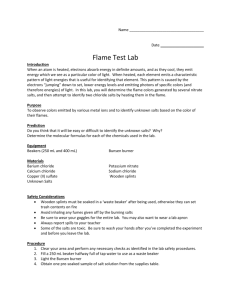Flame Test Exploration
advertisement
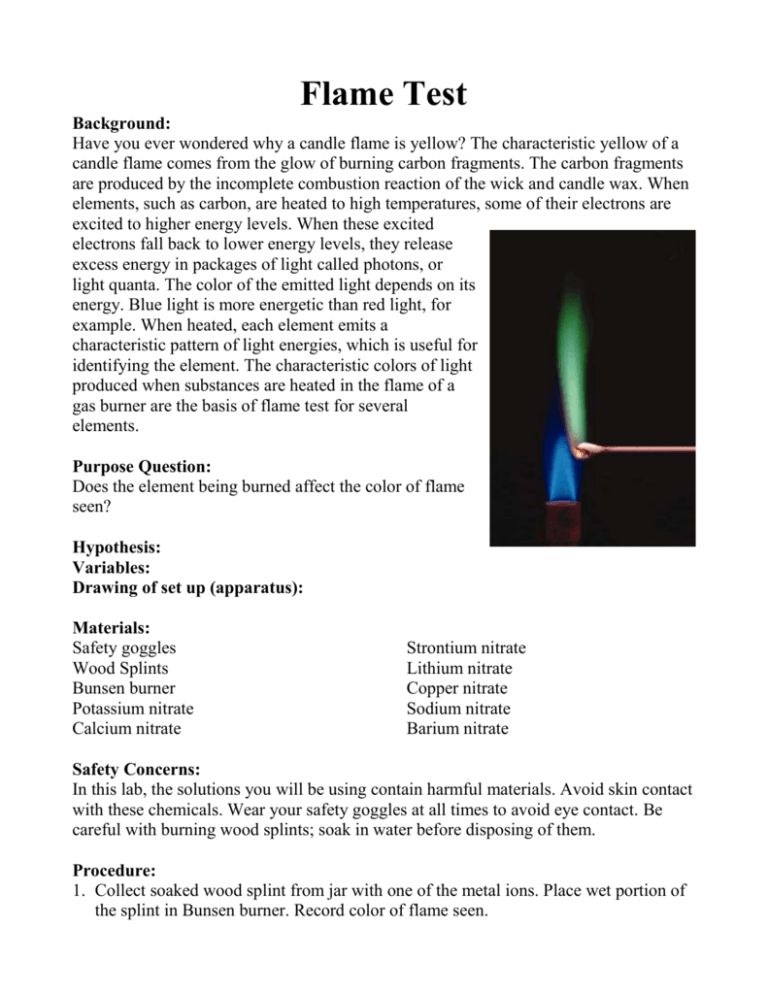
Flame Test Background: Have you ever wondered why a candle flame is yellow? The characteristic yellow of a candle flame comes from the glow of burning carbon fragments. The carbon fragments are produced by the incomplete combustion reaction of the wick and candle wax. When elements, such as carbon, are heated to high temperatures, some of their electrons are excited to higher energy levels. When these excited electrons fall back to lower energy levels, they release excess energy in packages of light called photons, or light quanta. The color of the emitted light depends on its energy. Blue light is more energetic than red light, for example. When heated, each element emits a characteristic pattern of light energies, which is useful for identifying the element. The characteristic colors of light produced when substances are heated in the flame of a gas burner are the basis of flame test for several elements. Purpose Question: Does the element being burned affect the color of flame seen? Hypothesis: Variables: Drawing of set up (apparatus): Materials: Safety goggles Wood Splints Bunsen burner Potassium nitrate Calcium nitrate Strontium nitrate Lithium nitrate Copper nitrate Sodium nitrate Barium nitrate Safety Concerns: In this lab, the solutions you will be using contain harmful materials. Avoid skin contact with these chemicals. Wear your safety goggles at all times to avoid eye contact. Be careful with burning wood splints; soak in water before disposing of them. Procedure: 1. Collect soaked wood splint from jar with one of the metal ions. Place wet portion of the splint in Bunsen burner. Record color of flame seen. 2. Soak burning wood splint in water to put out and then dispose of in garbage. 3. Continue testing each ion following same procedure. 4. Try doing some experimenting on your own such as mixing two ions. Data table: Ion Sodium (Na+) Potassium (K+) Calcium (Ca2+) Barium (Ba2+) Strontium (Sr2+) Lithium (Li+) Copper (Cu2+) Flame Color Observations from your own experiments: Analysis Questions: 1. What elements produced the most easily identifiable colors? What about the least identifiable? 2. Would flame tests be useful for detecting metal ions present in a mixture of metal ions? Explain. 3. The energy of colored light increases in the order red, yellow, green, blue, violet. List the metallic elements used in the flame tests in increasing order of the energy of the light emitted. Conclusion: Answer the purpose question using actual data to support. Discuss whether your hypothesis was supported or not by the data. What does the data tell us about the ions tested? What are some possible errors that may have affected your results? How could you improve your validity? How can the concepts you learned be used in the real world? What new question would you like to test now?

